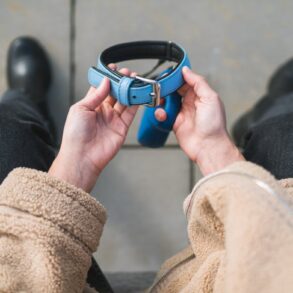For The San Diego Union-Tribune
Weighting no longer
Legislators in nine states, from California to Massachusetts, are considering bans on the sale of unregulated diet pills and supplements to minors. Only New York currently has a ban in place.
Nearly 1 in 10 adolescents reportedly use some type of poorly regulated, nonprescription weight loss products, which are sold in pharmacies, grocery stores and online. The products, which broadly behave like stimulants, can pose immediate cardiac risk and longer-term risks like disordered eating.

Service dogs for PTSD veterans
In the largest study of its type, funded by the National Institutes of Health, researchers found that veterans who have been diagnosed with PTSD endure less severe symptoms and experience significantly less depression and anxiety when they have a psychiatric service dog.
It was also the first study on this topic to use blind ratings, meaning that clinicians who assessed patients’ outcomes didn’t know whether they had a dog or not. All participants had full access to other types of mental health care during the study, which the authors wrote, suggests service dogs should be given in combination with standard care.

Body of knowledge
It’s estimated that 20 to 30 percent of people bite their nails, according to 2017 paper published by dermatologists at Weill Cornell Medicine. The percentage among teens approaches 45 percent. Nail-biting is called onychophagia. The first nail clippers were patented in 1875, but the type most commonly used now did not debut until 1881.
Counts
1 in 6 — Ratio of patients who experienced withdrawal symptoms after discontinuing antidepressant medications
Source: BMJ

Doc talk
Cicatrization — the process of forming a scar
Phobia of the week
Sociophobia — fear of social evaluation (hey, no one’s judging here)
Best medicine
A great way to lose weight is to eat while you are naked and standing in front of a mirror. Restaurants will always throw you out before you can eat too much.
Hypochondriac’s guide
Pica is an eating disorder where a person compulsively eats things that aren’t food and don’t have any nutritional value or purpose, anything from dirt and chalk to coffee grounds, eggshells, paper and feces. The condition can affect anyone at any age, but it tends to occur most often in young children, people who are pregnant or those with certain mental conditions, such as schizophrenia, or neurological conditions, such as autism spectrum disorder or intellectual disabilities. Sometimes, pica will go away on its own, such as after pregnancy or a child outgrows the behavior. Treatment primarily involves different types of behavioral therapy.

Observation
“Old age is like everything else. To make a success of it, you’ve got to start young.”
— American president Theodore Roosevelt (1858-1919)
Perishable publications
Many, if not most, published research papers have titles that defy comprehension. They use specialized jargon, complex words and opaque phrases like “nonlinear dynamics.” Sometimes they don’t, and yet they’re still hard to figure out. Here’s an actual title of actual published research study: “Etude sur la pendaison.”
Or in English: “The Hanging Study.”
In the early 1900s, Nicolae Minovici, a Romanian forensics scientist wanted to know more about the effects of hanging, beyond obviously the end result. So he hung himself 12 times for up to 25 seconds with an assistant nearby. He survived all of his experiments to publish his study in the Library of Criminology in 1905, reporting that some early symptoms of hanging are vision problems and ringing in the ears.
Minovici died in 1941 at the age of 72, reportedly from an illness affecting his vocal cords.

Med school
Q: Can you put in order, from most to least, the relative amounts of these five elements in the human body: hydrogen, nitrogen, oxygen, carbon and calcium?
A: In terms of mass percentage: oxygen (65 percent); carbon (18.5); hydrogen (9.5); nitrogen (2.6) and calcium (1.3). All other elements in the body measure less than 1 percent in mass, some only in trace amounts.
Curtain calls
While boating off the Florida Keys, a 55-year-old Michigan woman named Judy Kay Zagorski was killed in 2008 when a 75-pound spotted eagle ray leapt out of the water and struck her in the head, causing multiple skull fractures and direct brain injury. The ray died too.
LaFee is vice president of communications for the Sanford Burnham Prebys research institute.
This post was originally published on this site be sure to check out more of their content.












































